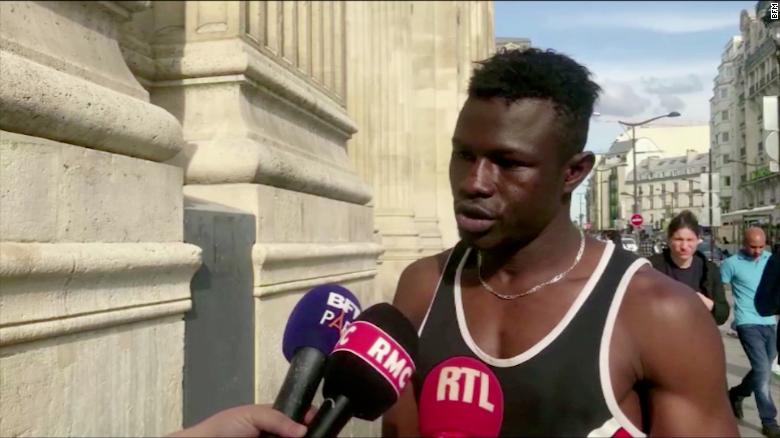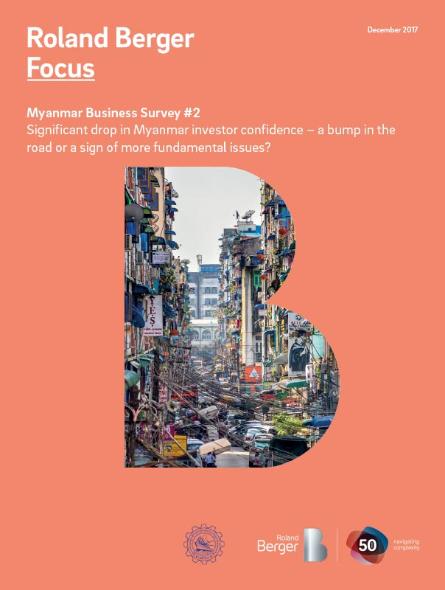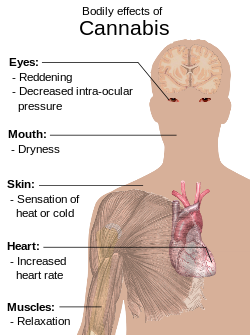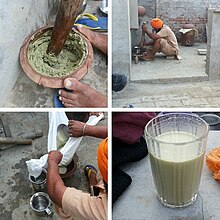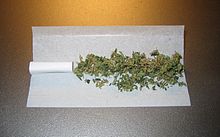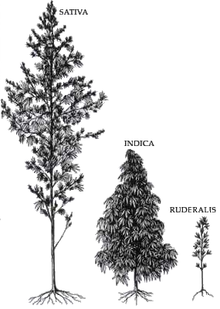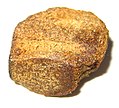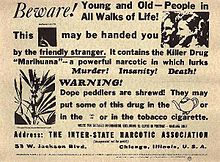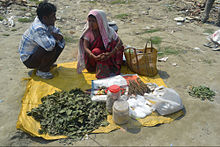ေဆးေျခာက္ကိုတရားဝင္ျဖစ္ဖို႔ လႈပ္ရွားေနၿပီ (News Video)
“ေဆးေျခာက္ဆိုတာနဲ႔ လူေတြက မူးယစ္ေဆးဝါးလို႔ ထင္ေနတယ္။ ဒါက
လြဲမွားေနတဲ့အျမင္ပါ။ ဒါကို ပညာေပးရမယ္။ Hemp က ကုန္ထုတ္လုပ္လို႔ရတယ္။
marijuana ကေဆးဘက္ဝင္တယ္ဆိုတဲ့အသိေတြကို လူမႈကြန္ယက္စာမ်က္ႏွာကေန
မွ်ေဝေနပါၿပီ။”
Everything You Need to Know About Hemp Products
In recent years there has been a rise in the popularity of natural products, particularly products derived from hemp. These hemp products are made with cannabidiol oil extracted from industrial hemp plants. The FDA considers hemp products with cannabinoids to be in the category of
nutritional supplements and not medication. The following three points are the top three things you should understand about hemp products.
CBD & Hemp Products
If you want to get the most out of hemp products, you should be an informed customer first.
Educating yourself on the topic
is the best way to gain an understanding on what you’re putting in your
body. CBD products are found in different forms, sizes, and flavors.
When comparing the amount of CBD in products, take into consideration
the total volume of product. For instance, by volume, a 1oz bottle with
200mg CBD is stronger than a 2oz bottle with 300mg CBD.
Another thing to consider is that some hemp products just show a
total amount of hemp oil, not the total amount of CBD specifically. Even
though hemp oil offers beneficial properties on its own and does
contain CBD within it, if you are specifically buying CBD products for
the CBD content, you should consider the level of CBD and not of hemp
oil.
How Are Hemp Products Used?
Pure hemp oil
should be consumed like a nutritional supplement. CBD hemp oil is found
in many types of foods and is available even in the forms of chewing
gum, drops and capsules. The concentrated CBD hemp oil may be infused in
body and skin care products so that they may be used topically.
CBD drops
also have different levels of CBD concentration. Concentration is about
the abundance of CBD when it is compared to the total volume of a
product. With hemp oil, the products can range from normal strength to
super-high CBD concentrations. The concentration you decide on will
depend on the CBD effects you are looking for.
Why Made by Hemp
Made by Hemp has some of the
best quality products that the CBD hemp market has to offer. This is
because not only do we manufacture many of our products in our own lab,
but we have them tested in a 3
rd party lab for their efficacy
and potency. With this extra control over quality, we are confident
that we are proving you and your family with the best possible product.
If you have any questions, contact one of our customer service personnel
and they will be happy to answer any questions you may have.
References
Cannabis (drug)
From Wikipedia, the free encyclopedia
| Cannabis |

A flowering cannabis plant
|
| Product name |
Cannabis |
| Pronunciation |
|
| Source plant(s) |
Cannabis sativa, Cannabis sativa forma indica, Cannabis ruderalis |
| Part(s) of plant |
Flower |
| Geographic origin |
Central and South Asia[1] |
| Active ingredients |
Tetrahydrocannabinol, cannabidiol, cannabinol, tetrahydrocannabivarin |
| Main producers |
Afghanistan,[2] Canada,[3] China, Colombia,[4] India,[2] Jamaica,[2] Lebanon,[5] Mexico,[6] Morocco,[2] Netherlands, Pakistan, Paraguay,[6] Spain,[2] Thailand, Turkey, United States[2] |
| Legal status |
|
Cannabis, also known as
marijuana among other names,
[n 1] is a
psychoactive drug from the
Cannabis plant intended for
medical or
recreational use.
[16][17][18] The main psychoactive part of cannabis is
tetrahydrocannabinol (THC); one of 483 known compounds in the plant,
[19] including at least 65 other
cannabinoids.
[20] Cannabis can be used by smoking, vaporizing, within food, or as an extract.
[21]
Cannabis is often used for its
mental and physical effects, such as a "high" or "stoned" feeling, a general
change in perception,
euphoria (heightened mood), and an increase in
appetite.
[21][22] Onset of effects is within minutes when smoked, and about 30 to 60 minutes when cooked and eaten.
[21][23] They last for between two and six hours.
[23] Short-term side effects may include a
decrease in short-term memory,
dry mouth, impaired motor skills, red eyes, and feelings of
paranoia or
anxiety.
[21][24][25]
Long-term side effects may include addiction, decreased mental ability
in those who started as teenagers, and behavioral problems in children
whose mothers used cannabis during pregnancy.
[21] Studies have found a strong relation between
cannabis use and the risk of psychosis,
[26] though the cause-and-effect relationship is debated.
[27]
Cannabis is mostly used recreationally or as a medicinal drug, although it may also be used for
religious or spiritual purposes.
In 2013, between 128 and 232 million people used cannabis (2.7% to 4.9%
of the global population between the ages of 15 and 65).
[28] In 2015, 43% of Americans had ever used cannabis, which increased to 51% in 2016.
[29] About 12% have used it in the past year, and 7.3% have used it in the past month.
[30] This makes it the most commonly used
illegal drug both in the world and the United States.
[21][28]
The earliest recorded uses date from the 3rd millennium BC.
[31] Since the early 20th century, cannabis has been subject to
legal restrictions. The
possession, use, and sale of cannabis is
illegal in most countries of the world.
[32][33]
Medical cannabis refers to the physician-recommended use of cannabis,
which is taking place in Canada, Belgium, Australia, the Netherlands,
Germany, Spain, and
23 U.S. states.
[34] Cannabis use started to become popular in the U.S. in the 1970s.
[35] Support for legalization has increased in the United States and several U.S. states have legalized recreational or medical use.
[36]
Uses
Medical
Main short-term physical effects of cannabis
Medical cannabis, or medical marijuana, can refer to the use of cannabis and its
cannabinoids to treat disease or improve symptoms; however, there is no single agreed-upon definition.
[37][38]
The rigorous scientific study of cannabis as a medicine has been
hampered by production restrictions and other federal regulations.
[39] There is limited evidence suggesting cannabis can be used to
reduce nausea and vomiting during
chemotherapy, to improve appetite in people with
HIV/AIDS, and to treat
chronic pain and
muscle spasms.
[40][41][42] Its use for other medical applications is insufficient for conclusions about safety or efficacy.
Recreational
A woman smoking a marijuana "joint".
Some immediate undesired side effects include a decrease in
short-term memory, dry mouth, impaired motor skills and reddening of the
eyes.
[48]
Aside from a subjective change in perception and mood, the most common
short-term physical and neurological effects include increased heart
rate, increased appetite and consumption of food, lowered blood
pressure, impairment of short-term and working memory,
[49][50] psychomotor coordination, and concentration. Some users may experience an episode of acute
psychosis, which usually abates after six hours, but in rare instances, heavy users may find the symptoms continuing for many days.
[51] A reduced
quality of life
is associated with heavy cannabis use, although the relationship is
inconsistent and weaker than for tobacco and other substances.
[52] It is unclear, however, if the relationship is cause and effect.
[52]
Spiritual
Process of making
bhang in a Sikh village in Punjab, India. On the festival of colors called
Holi, it is a customary addition to some intoxicating drinks.
[53]
Cannabis has held sacred status in several religions. It has been used in an
entheogenic context – a
chemical substance used in a
religious,
shamanic, or
spiritual context
[54] - in
India and
Nepal since the
Vedic period
dating back to approximately 1500 BCE, but perhaps as far back as 2000
BCE. There are several references in Greek mythology to a powerful drug
that eliminated anguish and sorrow.
Herodotus wrote about early ceremonial practices by the
Scythians,
thought to have occurred from the 5th to 2nd century BCE. In modern
culture the spiritual use of cannabis has been spread by the disciples
of the
Rastafari movement who use cannabis as a
sacrament and as an aid to meditation. The earliest known reports regarding the sacred status of cannabis in
India and
Nepal come from the
Atharva Veda estimated to have been written sometime around 2000–1400 BCE.
[55]
Available forms
A joint prior to rolling, with a paper handmade filter on the left
Cannabis is consumed in many different ways:
[56]
smoking, which typically involves burning and inhaling vaporized cannabinoids ("smoke") from small pipes, bongs (portable versions of hookahs with a water chamber), paper-wrapped joints or tobacco-leaf-wrapped blunts, and other items.[57]
vaporizer, which heats any form of cannabis to 165–190 °C (329–374 °F),[58] causing the active ingredients to evaporate into a vapor without burning the plant material (the boiling point of THC is 157 °C (315 °F) at 760 mmHg pressure).[59]
cannabis tea, which contains relatively small concentrations of THC because THC is an oil (lipophilic) and is only slightly water-soluble (with a solubility of 2.8 mg per liter).[60] Cannabis tea is made by first adding a saturated fat to hot water (e.g. cream or any milk except skim) with a small amount of cannabis.[61]
edibles,
where cannabis is added as an ingredient to one of a variety of foods,
including butter and baked goods. In India it is commonly made into a
beverage, bhang.
Adverse effects
Addiction experts in psychiatry, chemistry, pharmacology, forensic
science, epidemiology, and the police and legal services engaged in
delphic analysis
regarding 20 popular recreational drugs. Cannabis was ranked 11th in
dependence, 17th in physical harm, and 10th in social harm.
[62]
According to the United States Department of Health and Human
Services, there were 455,000 emergency room visits associated with
cannabis use in 2011. These statistics include visits in which the
patient was treated for a condition induced by or related to recent
cannabis use. The drug use must be "implicated" in the emergency
department visit, but does not need to be the direct cause of the visit.
Most of the illicit drug emergency room visits involved multiple drugs.
[63] In 129,000 cases, cannabis was the only implicated drug.
[64][65]
Heavy, long term exposure to marijuana may have biologically-based
physical, mental, behavioral and social health consequences and may be
"associated with diseases of the liver (particularly with co-existing
hepatitis C), lungs, heart, and vasculature".
[66] It is recommended that cannabis use be stopped before and during
pregnancy as it can result in negative outcomes for both the mother and baby.
[67][68]
However, maternal use of marijuana during pregnancy does not appear to
be associated with low birth weight or early delivery after controlling
for tobacco use and other confounding factors.
[69] A 2014 review found that while cannabis use may be less harmful than alcohol use, the recommendation to substitute it for
problematic drinking is premature without further study.
[70] Other side effects include
cannabinoid hyperemesis syndrome.
[71]
Acute
Acute effects may include anxiety and panic, impaired attention, and
memory (while intoxicated), an increased risk of psychotic symptoms, and
possibly an increased risk of accidents if a person drives a motor
vehicle while intoxicated.
[72]
Short-term cannabis intoxication can hinder the mental processes of
organizing and collecting thoughts. This condition is known as temporal
disintegration.
[73]
Psychotic episodes are well-documented and typically resolve within
minutes or hours. There have been few reports of symptoms lasting
longer.
[74][75]
Studies have found that cannabis use during adolescence is associated
with impairments in memory that persist beyond short-term intoxication.
[76]
Lungs
Cancer
Cannabis smoke contains thousands of organic and inorganic chemical compounds. This
tar is chemically similar to that found in tobacco smoke,
[80] and over fifty known
carcinogens have been identified in cannabis smoke,
[81] including; nitrosamines, reactive aldehydes, and polycylic hydrocarbons, including benz[a]pyrene.
[82] Cannabis smoke is also inhaled more deeply than is tobacco smoke.
[83] As of 2015, there is no consensus regarding whether cannabis smoking is associated with an increased risk of cancer.
[84]
Light and moderate use of cannabis is not believed to increase risk of
lung or upper airway cancer. Evidence for causing these cancers is mixed
concerning heavy, long-term use. In general there are far lower risks
of pulmonary complications for regular cannabis smokers when compared
with those of tobacco.
[85] A 2015 review found an association between cannabis use and the development of testicular
germ cell tumors (TGCTs), particularly non-
seminoma TGCTs.
[86]
A 2015 analysis of six studies found little evidence that long-term or
regular cannabis smoking was associated with lung cancer risk, though it
could not rule out whether an association with heavy smoking exists.
[87] Another 2015 meta-analysis found no association between lifetime cannabis use and risk of head or neck cancer.
[88] Combustion products are not present when using a
vaporizer, consuming THC in pill form, or consuming
cannabis foods.
[citation needed]
Cardiovascular
There is concern that cannabis may contribute to cardiovascular disease.
[89] As of 2018 evidence of an association is unclear.
[90]
Cannabis is believed to be an aggravating factor in rare cases of
arteritis,
a serious condition that in some cases leads to amputation. Because 97%
of case-reports also smoked tobacco, a formal association with cannabis
could not be made. If cannabis arteritis turns out to be a distinct
clinical entity, it might be the consequence of
vasoconstrictor activity observed from
delta-8-THC and
delta-9-THC.
[91] Other serious cardiovascular events including
myocardial infarction, stroke,
[92] sudden cardiac death, and
cardiomyopathy
have been reported to be temporally associated with cannabis use.
Research in these events is complicated because cannabis is often used
in conjunction with tobacco, and drugs such as alcohol and cocaine.
[93] These putative effects can be taken in context of a wide range of cardiovascular phenomena regulated by the
endocannabinoid system and an overall role of cannabis in causing decreased peripheral resistance and increased
cardiac output, which potentially could pose a threat to those with cardiovascular disease.
[94] There is some evidence from
case reports
that cannabis use may provoke fatal cardiovascular events in young
people who have not been diagnosed with cardiovascular disease.
[95] Smoking cannabis has also been shown to increase the risk of
myocardial infarction by 4.8 times for the 60 minutes after consumption.
[96]
Neurological
Anatomy and brain chemistry
Cannabis use is associated with neuroanatomic alterations in brain
regions rich in cannabinoid receptors, such as the hippocampus,
prefrontal cortex, amygdala, and cerebellum. The same review found that
greater dose of marijuana and earlier age at onset of use were also
associated with such alterations.
[97][98] It is unclear, however, whether these alterations are caused by marijuana use or were present before such use.
[99]
A 2010 review found resting blood flow to be lower globally and in
prefrontal areas of the brain in cannabis users, when compared to
non-users. It was also shown that giving THC or cannabis correlated with
increased bloodflow in these areas, and facilitated activation of the
anterior cingulate cortex and
frontal cortex when participants were presented with assignments demanding use of cognitive capacity.
[100] Both reviews noted that some of the studies that they examined had methodological limitations, for example small
sample sizes or not distinguishing adequately between cannabis and alcohol consumption.
[98][100] Cannabis users appear to have smaller
hippocampi than nonusers; this finding is based on a series of small studies with inconsistent designs, so it is uncertain.
[101] A 2016 meta-analysis found that regular cannabis users tended to have
cue reactivity, the intensity of which ranged from moderate to very high.
[102]
There is limited evidence that chronic cannabis use can reduce levels of
glutamate metabolites in the human brain.
[103]
Function
A 2012 meta-analysis found that the effects of cannabis use on
neurocognitive
functions were "limited to the first 25 days of abstinence" and that
there was no evidence that such use had long-lasting effects,
[104] while a 2011 review found that cannabis use impaired
cognitive functions on several levels, ranging from basic coordination to executive function tasks.
[105]
Psychiatric
Epidemiological studies have found a strong correlation between
cannabis use and the risk of psychosis, and found the risk is higher
with strains higher in THC.
[26]
However, not all researchers consider this association to reflect a
cause-and-effect relationship between cannabis use and psychosis.
[27]
It is not clear whether cannabis use affects the rate of suicide.
[106][107] It may increase the risk of depression, but further research is needed in this area.
[108]
Chronic use
Effects of chronic use may include bronchitis, a cannabis dependence
syndrome, and subtle impairments of attention and memory. These deficits
persist while chronically intoxicated.
[72] There is little evidence that cognitive impairments persist in adult abstinent cannabis users.
[109]
Compared to non-smokers, people who smoked cannabis regularly in
adolescence exhibit reduced connectivity in specific brain regions
associated with memory, learning, alertness, and executive function.
[65]
A study has suggested that sustained heavy, daily, adolescent onset
cannabis use over decades is associated with a decline in IQ by age 38.
No effects were found in those who initiated cannabis use later, or in
those who ceased use earlier in adulthood.
[95]
Tolerance and withdrawal
Cannabis usually causes no tolerance or withdrawal symptoms except in
heavy users. In a survey of heavy users, 42.4% experienced withdrawal
symptoms when they tried to quit marijuana, such as craving,
irritability, boredom, anxiety and sleep disturbances.
[110]
About 9% of those who experiment with marijuana eventually become
dependent. The rate goes up to 1 in 6 among those who begin use as
adolescents, and one-quarter to one-half of those who use it daily
according to a
NIDA review.
[65] A 2013 review estimates daily use is associated with a 10-20% rate of dependence.
[40]
The highest risk of cannabis dependence is found in those with a
history of poor academic achievement, deviant behavior in childhood and
adolescence, rebelliousness, poor parental relationships, or a parental
history of drug and alcohol problems.
[111] Cannabis withdrawal is less severe than withdrawal from alcohol.
[112]
Motor vehicle crashes
Marijuana is the most common illegal drug reported in motor vehicle accidents.
[113] A 2012 meta-analysis found that cannabis use was associated with an increased risk of being involved in a
motor vehicle crash.
[114]
A 2016 review also found a statistically significant increase in crash
risk associated with marijuana use, but noted that this risk was "of low
to medium magnitude."
[115]
The increase in risk of motor vehicle crash for cannabis use is between
2 and 3 times relative to baseline, whereas that for comparable doses
of alcohol is between 6 and 15 times.
[95]
Overdose
THC, the principal
psychoactive constituent of the cannabis plant, has low
toxicity. The dose of THC needed to kill 50% of tested rodents is extremely high. Cannabis has not been reported to cause fatal
overdose in humans.
[106]
Pharmacology
Mechanism of action
The high
lipid-solubility of cannabinoids results in their persisting in the body for long periods of time.
[116]
Even after a single administration of THC, detectable levels of THC can
be found in the body for weeks or longer (depending on the amount
administered and the sensitivity of the assessment method).
[116]
A number of investigators have suggested that this is an important
factor in marijuana's effects, perhaps because cannabinoids may
accumulate in the body, particularly in the lipid membranes of neurons.
[117]
Not until the end of the 20th century was the specific mechanism of action of THC at the neuronal level studied.
[citation needed] Researchers have subsequently confirmed that THC exerts its most prominent effects via its actions on two types of
cannabinoid receptors, the
CB1 receptor and the
CB2 receptor, both of which are
G protein-coupled receptors.
[118] The CB
1 receptor is found primarily in the brain as well as in some peripheral tissues, and the CB
2 receptor is found primarily in peripheral tissues, but is also expressed in
neuroglial cells.
[119] THC appears to alter mood and cognition through its agonist actions on the CB
1 receptors, which inhibit a
secondary messenger system (
adenylate cyclase) in a dose-dependent manner. These actions can be blocked by the selective CB
1 receptor
antagonist rimonabant (SR141716), which has been shown in clinical trials to be an effective treatment for
smoking cessation,
weight loss, and as a means of controlling or reducing
metabolic syndrome risk factors.
[120] However, due to the
dysphoric effect of CB
1 receptor antagonists, this drug is often discontinued due to these side effects.
[121]
Chemistry
Detection in body fluids
THC and its major (inactive) metabolite, THC-COOH, can be measured in blood, urine, hair, oral fluid or sweat using
chromatographic techniques as part of a drug use testing program or a forensic investigation of a traffic or other criminal offense.
[125]
The concentrations obtained from such analyses can often be helpful in
distinguishing active use from passive exposure, elapsed time since use,
and extent or duration of use. These tests cannot, however, distinguish
authorized cannabis smoking for medical purposes from unauthorized
recreational smoking.
[126] Commercial cannabinoid
immunoassays,
often employed as the initial screening method when testing
physiological specimens for marijuana presence, have different degrees
of cross-reactivity with THC and its metabolites.
[127] Urine contains predominantly THC-COOH, while hair, oral fluid and sweat contain primarily THC.
[125] Blood may contain both substances, with the relative amounts dependent on the recency and extent of usage.
[125]
The
Duquenois–Levine test is commonly used as a
screening test
in the field, but it cannot definitively confirm the presence of
cannabis, as a large range of substances have been shown to give false
positives.
[citation needed] Despite this, it is common in the United States for prosecutors to seek
plea bargains
on the basis of positive D–L tests, claiming them to be conclusive, or
even to seek conviction without the use of gas chromatography
confirmation, which can only be done in the lab.
[128]
In 2011, researchers at John Jay College of Criminal Justice reported
that dietary zinc supplements can mask the presence of THC and other
drugs in urine.
[129]
However, a 2013 study conducted by researchers at the University of
Utah School of Medicine refute the possibility of self-administered zinc
producing false-negative urine drug tests.
[130]
Varieties and strains
CBD is a
5-HT1A receptor agonist, which may also contribute to an
anxiolytic effect.
[131] This likely means the high concentrations of CBD found in
Cannabis indica mitigate the
anxiogenic effect of THC significantly.
[131]
The effects of sativa are well known for their cerebral high, hence its
daytime use as medical cannabis, while indica is well known for its
sedative effects and preferred night time use as medical cannabis.
[131]
Psychoactive ingredients
According to the
United Nations Office on Drugs and Crime (UNODC), "the amount of THC present in a cannabis sample is generally used as a measure of cannabis potency."
[132]
The three main forms of cannabis products are the flower, resin
(hashish), and oil (hash oil). The UNODC states that cannabis often
contains 5% THC content, resin "can contain up to 20% THC content", and
that "Cannabis oil may contain more than 60% THC content."
[132]
A 2012 review found that the THC content in marijuana had increased worldwide from 1970 to 2009.
[133]
It is unclear, however, whether the increase in THC content has caused
people to consume more THC or if users adjust based on the potency of
the cannabis. It is likely that the higher THC content allows people to
ingest less tar. At the same time, CBD levels in seized samples have
lowered, in part because of the desire to produce higher THC levels and
because more illegal growers cultivate indoors using artificial lights.
This helps avoid detection but reduces the CBD production of the plant.
[134]
Australia's
National Cannabis Prevention and Information Centre
(NCPIC) states that the buds (flowers) of the female cannabis plant
contain the highest concentration of THC, followed by the leaves. The
stalks and seeds have "much lower THC levels".
[135] The UN states that leaves can contain ten times less THC than the buds, and the stalks one hundred times less THC.
[132]
After revisions to
cannabis scheduling in the UK, the government moved cannabis back from a
class C to a
class B drug. A purported reason was the appearance of high potency cannabis. They believe
skunk accounts for between 70 and 80% of samples seized by police
[136] (despite the fact that skunk can sometimes be incorrectly mistaken for all types of herbal cannabis).
[137][138] Extracts such as
hashish and
hash oil typically contain more THC than high potency cannabis flowers.
[139]
Preparations
Marijuana
Marijuana or marihuana (herbal cannabis),
[140] consists of the dried flowers and subtending leaves and stems of the female
Cannabis plant.
[141][142][143][144] This is the most widely consumed form,
[144] containing 3% to 20% THC,
[145] with reports of up-to 33% THC.
[146] This is the stock material from which all other preparations are derived. Although herbal cannabis and
industrial hemp
derive from the same species and contain the psychoactive component
(THC), they are distinct strains with unique biochemical compositions
and uses. Hemp has lower concentrations of THC and higher concentrations
of CBD, which decreases the psychoactive effects
[147][148]
Kief
Hashish
Hashish (also spelled hasheesh, hashisha, or simply hash) is a concentrated
resin cake or ball produced from pressed kief, the detached trichomes and fine material that falls off cannabis flowers and leaves.
[152]
or from scraping the resin from the surface of the plants and rolling
it into balls. It varies in color from black to golden brown depending
upon purity and variety of cultivar it was obtained from.
[153] It can be consumed orally or smoked, and is also vaporised, or 'vaped'.
[154] The term "rosin hash" refers to a high quality solventless product obtained through heat and pressure.
[155]
Tincture
Hash oil
Hash oil is a
resinous matrix of
cannabinoids obtained from the
Cannabis plant by
solvent extraction,
[158] formed into a hardened or viscous mass.
[159]
Hash oil can be the most potent of the main cannabis products because
of its high level of psychoactive compound per its volume, which can
vary depending on the plant's mix of essential oils and psychoactive
compounds.
[160] Butane and
supercritical carbon dioxide hash oil have become popular in recent years.
[161]
Infusions
There are many varieties of cannabis infusions owing to the variety of non-volatile solvents used.
[162]
The plant material is mixed with the solvent and then pressed and
filtered to express the oils of the plant into the solvent. Examples of
solvents used in this process are cocoa butter, dairy butter, cooking
oil,
glycerine, and skin moisturizers. Depending on the solvent, these may be used in
cannabis foods or applied topically.
[163]
Medical use
Medical marijuana refers to the use of the
Cannabis plant as a physician-recommended
herbal therapy as well as synthetic
[164] THC and cannabinoids. So far, the medical use of cannabis is legal only in a limited number of territories, including Canada,
Belgium, Australia, the
Netherlands, Spain, and
many U.S. states.
This usage generally requires a prescription, and distribution is
usually done within a framework defined by local laws. There is evidence
supporting the use of cannabis or its derivatives in the treatment of
chemotherapy-induced nausea and vomiting, neuropathic pain, and multiple
sclerosis. Lower levels of evidence support its use for AIDS wasting
syndrome, epilepsy, rheumatoid arthritis, and glaucoma.
[65]
History
Cannabis is
indigenous to Central and South Asia,
[165] and its use for fabric and rope dates back to the
Neolithic age in China and Japan.
[166][167]
It is unclear when cannabis first became known for its psychoactive
properties; some scholars suggest that the ancient Indian drug
soma, mentioned in the
Vedas, was cannabis, although this theory is disputed.
[168]
Cannabis was also known to the
ancient Assyrians, who discovered its psychoactive properties through the
Aryans.
[169] Using it in some religious ceremonies, they called it
qunubu (meaning "way to produce smoke"), a probable origin of the modern word "cannabis".
[170] The Aryans also introduced cannabis to the
Scythians,
Thracians and
Dacians, whose
shamans (the
kapnobatai—"those who walk on smoke/clouds") burned cannabis flowers to induce
trance.
[171]
Cannabis has an ancient history of ritual use and is found in
pharmacological cults around the world. Hemp seeds discovered by archaeologists at
Pazyryk
suggest early ceremonial practices like eating by the Scythians
occurred during the 5th to 2nd century BC, confirming previous
historical reports by
Herodotus.
[172] It was used by Muslims in various
Sufi orders as early as the
Mamluk period, for example by the
Qalandars.
[173] Smoking pipes uncovered in Ethiopia and carbon-dated to around c. AD 1320 were found to have traces of cannabis.
[174]
Cannabis indica fluid extract, American Druggists Syndicate, pre-1937
Cannabis was criminalized in various countries beginning in the 19th
century. The British colonies of Mauritius banned cannabis in 1840 over
concerns on its effect on Indian indentured workers;
[176] the same occurred in British Singapore in 1870.
[177] In the United States, the first restrictions on sale of cannabis came in 1906 (in
District of Columbia).
[178] It was outlawed in
Jamaica (then a British colony) in 1913, in
South Africa in 1922, and in the United Kingdom and New Zealand in the 1920s.
[179] Canada criminalized cannabis in
The Opium and Narcotic Drug Act, 1923,
[180] before any reports of the use of the drug in Canada.
In 1925 a compromise was made at an international conference in
The Hague about the
International Opium Convention
that banned exportation of "Indian hemp" to countries that had
prohibited its use, and requiring importing countries to issue
certificates approving the importation and stating that the shipment was
required "exclusively for medical or scientific purposes". It also
required parties to "exercise an effective control of such a nature as
to prevent the illicit international traffic in Indian hemp and
especially in the resin".
[181][182] In the United States in 1937, the
Marihuana Tax Act was passed,
[183] and prohibited the production of hemp in addition to cannabis.
In 1972, the Dutch government divided drugs into more- and
less-dangerous categories, with cannabis being in the lesser category.
Accordingly, possession of 30 grams or less was made a misdemeanor.
[184] Cannabis has been available for recreational use in
coffee shops since 1976.
[185]
Cannabis products are only sold openly in certain local "coffeeshops"
and possession of up to 5 grams for personal use is decriminalised,
however: the police may still confiscate it, which often happens in car
checks near the border. Other types of sales and transportation are not
permitted, although the general approach toward cannabis was lenient
even before official
decriminalisation.
[186][187][188]
In Uruguay, President
Jose Mujica signed legislation to
legalize recreational cannabis
in December 2013, making Uruguay the first country in the modern era to
legalize cannabis. In August 2014, Uruguay legalized growing up to six
plants at home, as well as the formation of growing clubs, and a
state-controlled
marijuana dispensary regime. Following Canada's 2015 election of
Justin Trudeau and formation of a Liberal government, in 2017 the House of Commons passed a bill to legalize cannabis on 1 July 2018.
[189]
The United Nations'
World Drug Report stated that cannabis
"was the world's most widely produced, trafficked, and consumed drug in
the world in 2010", and estimated between 128 million and 238 million
users globally in 2015.
[190][191]
Society and culture
Legal status
Cannabis propaganda sheet from 1935
Since the beginning of the 20th century, most countries have enacted
laws against the cultivation, possession or transfer of cannabis.
[193]
These laws have impacted adversely on the cannabis plant's cultivation
for non-recreational purposes, but there are many regions where, under
certain circumstances, handling of cannabis is legal or licensed. Many
jurisdictions have lessened the penalties for possession of small
quantities of cannabis so that it is punished by confiscation and
sometimes a fine, rather than imprisonment, focusing more on those who
traffic the drug on the
black market.
In some areas where cannabis use had been historically tolerated, new
restrictions were instituted, such as the closing of cannabis coffee
shops near the borders of the Netherlands,
[194] and closing of coffee shops near secondary schools in the Netherlands.
[195] In
Copenhagen, Denmark in 2014, mayor
Frank Jensen discussed possibilities for the city to legalize cannabis production and commerce.
[196]
Some jurisdictions use free voluntary treatment programs and/or
mandatory treatment programs for frequent known users. Simple possession
can carry long prison terms in some countries, particularly in East
Asia, where the sale of cannabis may lead to a sentence of life in
prison or even execution. Political parties, non-profit organizations,
and causes based on the legalization of medical cannabis and/or
legalizing the plant entirely (with some restrictions) have emerged in
such countries as China and Thailand.
[197][198]
In December 2012, the U.S. state of
Washington became the first state to officially legalize cannabis in a state law (
Washington Initiative 502) (but still illegal by
federal law),
[199] with the state of
Colorado following close behind (
Colorado Amendment 64).
[200]
On January 1, 2013, the first marijuana "club" for private marijuana
smoking (no buying or selling, however) was allowed for the first time
in Colorado.
[201]
The California Supreme Court decided in May 2013 that local governments
can ban medical marijuana dispensaries despite a state law in
California that permits the use of cannabis for medical purposes. At
least 180 cities across California have enacted bans in recent years.
[202]
In December 2013,
Uruguay became the first country to legalize growing, sale and use of cannabis.
[203]
After a long delay in implementing the retail component of the law, in
2017 sixteen pharmacies were authorized to sell cannabis commercially.
[204]
In November 2015,
Uttarakhand became the first state of
India to legalize the cultivation of hemp for industrial purposes.
[205]
On October 17, 2015, Australian health minister Sussan Ley presented a
new law that will allow the cultivation of cannabis for scientific
research and medical trials on patients.
[206]
In December 2015, it was reported that the Canadian government had
committed to legalizing cannabis, but at that time no timeline for the
legalization was set out.
[207]
Usage
In 2013, between 128 and 232 million people used cannabis (2.7% to 4.9% of the global population between the ages of 15 and 65).
[28] Cannabis is by far the most widely used illicit substance.
[218]
United States
Between 1973 and 1978, eleven states decriminalized marijuana.
[219]
In 2001 Nevada reduced marijuana possession to a misdemeanor and since
2012, several other states have decriminalized and even legalized
marijuana.
[219]
In 2015, almost half of the people in the United States had tried
marijuana, 12% had used it in the past year, and 7.3% had used it in the
past month.
[30]
In 2014, daily marijuana use amongst US college students had reached
its highest level since records began in 1980, rising from 3.5% in 2007
to 5.9% in 2014 and had surpassed daily cigarette use.
[220]
In the US, men are over twice as likely to use marijuana as women and
18-29 year-olds are six times more likely to use as over 65-year-olds.
[35] In 2015, a record 44% of the US population has tried marijuana in their lifetime, an increase from 38% in 2013 and 33% in 1985.
[35]
Marijuana use in the United States is three times above the global
average, but in line with other Western democracies. 44% of American
12th graders have tried the drug at least once, and the typical age of
first-use is 16, similar to the typical age of first-use for alcohol but
lower than the first-use age for other illicit drugs.
[218]
Economics
Production
It is often claimed by growers and breeders of herbal cannabis that
advances in breeding and cultivation techniques have increased the
potency of cannabis since the late 1960s and early '70s when THC was
first discovered and understood. However, potent seedless cannabis such
as "
Thai sticks" were already available at that time.
Sinsemilla (Spanish for "without seed") is the dried, seedless
inflorescences
of female cannabis plants. Because THC production drops off once
pollination occurs, the male plants (which produce little THC
themselves) are eliminated before they shed pollen to prevent
pollination. Advanced cultivation techniques such as
hydroponics,
cloning,
high-intensity artificial lighting, and
the sea of green method
are frequently employed as a response (in part) to prohibition
enforcement efforts that make outdoor cultivation more risky. It is
often cited that the average levels of THC in cannabis sold in the
United States rose dramatically between the 1970s and 2000, but such
statements are likely skewed because undue weight is given to much more
expensive and potent, but less prevalent samples.
[221]
"Skunk" refers to several named strains of potent cannabis, grown through selective breeding and sometimes
hydroponics. It is a cross-breed of
Cannabis sativa and
C. indica
(although other strains of this mix exist in abundance). Skunk cannabis
potency ranges usually from 6% to 15% and rarely as high as 20%. The
average THC level in coffee shops in the Netherlands is about 18–19%.
[222]
Price
The price or street value of cannabis varies widely depending on geographic area and potency.
[223]
In the United States, cannabis is overall the number four value crop,
and is number one or two in many states including California, New York
and Florida, averaging $3,000 per pound ($6,600/kg).
[224][225] Some believe it generates an estimated $36 billion market.
[226]
Some have argued that this estimate is methodologically flawed, and
makes unrealistic assumptions about the level of marijuana consumption.
Other estimates claiming to correct for this flaw claim that the market
is between $2.1-$4.3 billion.
[218] The
United Nations Office on Drugs and Crime claims in its 2008 World Drug Report that typical U.S. retail prices are $10–15 per gram (approximately $280–420 per
ounce). Street prices in North America are known to range from about $40–$400 per ounce ($1.4–$14/g), depending on quality.
[227]
Gateway drug
The Gateway Hypothesis states that cannabis use increases the
probability of trying "harder" drugs. The hypothesis has been hotly
debated as it is regarded by some as the primary rationale for the
United States prohibition on cannabis use.
[229][230]
A Pew Research Center poll found that political opposition to marijuana
use was significantly associated with concerns about health effects and
whether legalization would increase marijuana use by children.
[231]
Some studies state that while there is no proof for the gateway hypothesis,
[232] young cannabis users should still be considered as a risk group for intervention programs.
[233] Other findings indicate that
hard drug users are likely to be
poly-drug users, and that interventions must address the use of multiple drugs instead of a single hard drug.
[234] Almost two-thirds of the poly drug users in the "2009/10 Scottish Crime and Justice Survey" used cannabis.
[235]
The gateway effect may appear due to social factors involved in using
any illegal drug. Because of the illegal status of cannabis, its
consumers are likely to find themselves in situations allowing them to
acquaint with individuals using or selling other illegal drugs.
[236][237] Utilizing this argument some studies have shown that alcohol and tobacco may additionally be regarded as gateway drugs;
[238]
however, a more parsimonious explanation could be that cannabis is
simply more readily available (and at an earlier age) than illegal hard
drugs. In turn alcohol and tobacco are easier to obtain at an earlier
point than is cannabis (though the reverse may be true in some areas),
thus leading to the "gateway sequence" in those individuals since they
are most likely to experiment with any drug offered.
[229]
An alternative to the gateway hypothesis is the common liability to
addiction (CLA) theory. It states that some individuals are, for various
reasons, willing to try multiple recreational substances. The "gateway"
drugs are merely those that are (usually) available at an earlier age
than the harder drugs. Researchers have noted in an extensive review
that it is dangerous to present the sequence of events described in
gateway "theory" in causative terms as this hinders both research and
intervention.
[239]
Research
Cannabis research is challenging since the plant is illegal in most countries.
[240][241][242][243][244]
Research-grade samples of the drug are difficult to obtain for research
purposes, unless granted under authority of national governments.
There are also other difficulties in researching the effects of cannabis. Many people who smoke cannabis also smoke tobacco.
[245]
This causes confounding factors, where questions arise as to whether
the tobacco, the cannabis, or both that have caused a cancer. Another
difficulty researchers have is in recruiting people who smoke cannabis
into studies. Because cannabis is an illegal drug in many countries,
people may be reluctant to take part in research, and if they do agree
to take part, they may not say how much cannabis they actually smoke.
[246]
A 2015 review found that the use of high CBD-to-THC strains of cannabis showed significantly fewer
positive symptoms such as delusions and hallucinations, better
cognitive function
and both lower risk for developing psychosis, as well as a later age of
onset of the illness, compared to cannabis with low CBD-to-THC ratios.
[247]
A 2014 Cochrane review found that research was insufficient to
determine the safety and efficacy to using cannabis to treat
schizophrenia or psychosis.
[248]
See also

